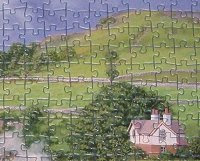But what does Simile stand for? If you don't already know you will never guess, it stands for 'Semantic Interoperability of Metadata and Information in unLike Environments'.
 Sooo... why exactly am I interested in this? It has something to do with my day job.
Sooo... why exactly am I interested in this? It has something to do with my day job.A portion of that day job is hunting for useful technology for the web development team I'm part of, we create intranet websites for Unilever. The thing is, MIT's Simile project 'seeks to enhance inter-operability among digital assets' and is 'fully committed to the open source principles of software distribution and open development'. To put this another way, they develop some very cool applications that work together and they release them for use and adaptation by anyone, anywhere, for any purpose.
The application that first caught my eye is called 'Timeline' and it is amazing. The code is stored on MIT's servers so there's nothing to install and download. The data is stored locally as an XML file. If you're not a techie person and you're still following along, just take a look at a couple of their example timelines, one on religions, the other on dinosaurs. They are so cool. Just drag them sideways with the mouse.
The other applications are good too, if you develop websites many of these may be a perfect way of making your site truly impressive, just by embedding stuff the way you would with Google Maps or You Tube.
Quite apart from the effectiveness of the individual offerings and the fact that they are free to use, the Simile project showcases how web components should be designed and built. Congratulations and thanks to MIT and to everyone working on aspects of the Simile project.






